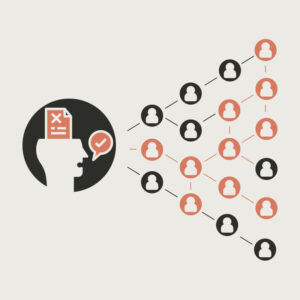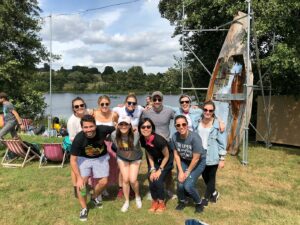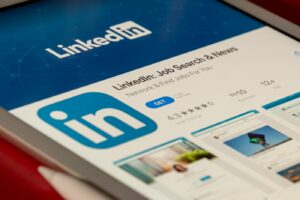It was 2006, I was at my second “grown-up” job out of college, and I made my friends join this thing called MySpace.
My experience with the Internet and social media probably sounds familiar to a lot of you. I’m both old enough to remember what the web was like before social media and young enough to have used it throughout my entire marketing career. The Internet didn’t exist when I was a very young child, but I had my own AOL Instant Messenger handle by the time I was in high school.
Professionally, I was immediately thrown into the deep end from a digital perspective. In 2005, I landed a gig as the eAdvocacy Coordinator for Oxfam America. The aid organization had grown tremendously after the horrific Southeast Asian earthquake in late 2004. I came on board to expand our email engagement with the tens of thousands of new supporters who signed up as a result of that horrific tragedy.
Did I know then that social media was about to disrupt how individuals and companies did pretty much everything?
Was starting the first-ever* social account for a big, global brand on my bingo card? Of course not. But it very soon influenced how I did my work at Oxfam.
*By my research, I could be proven wrong if that’s the case.
The Birth of Social Media and My First MySpace Page
I’m betting that most of you remember the moment you created your first social media account. For me, that was on MySpace.
What attracted me was that MySpace presented a completely new way to connect with people. It was the first truly digital platform for individuals (Friendster, we hardly knew ya). I loved seeing what my friends were up to; it seems quaint today, but getting a sort of daily postcard from each person in my friendship diaspora felt revolutionary. It made my world feel smaller and much more connected. I was hooked.
It wasn’t long after I started at Oxfam that I had an epiphany: “Why isn’t Oxfam also on MySpace?” I knew there was so much opportunity to connect with our supporters and also email them directly through MySpace (remember when that was still possible?)
My First Social Strategy Started with Oxfam
Oxfam didn’t hire me with the expectation that I would manage social media. Why? No one, at any company anywhere, had put any intention, energy, or discovery (or at least not much) into having a presence on a social platform, let alone a strategy. But in essence, I did create the first social media marketing role ever. Of note, today, the monthly search volume (MSV) for “jobs for social media marketing” is over 6,600. Chalk one up for the history books.
Despite all that, I realized I was at the vanguard of a trend. Sure, the web was still relatively young; that doesn’t mean we hadn’t all collectively observed winners and losers. And the winners were, at very least, companies with a documented history of taking some risks and leaning into first-generation tools.
So, what did I do?
My big innovation?
I made a MySpace page for Oxfam.
While I can’t confirm this, I can’t find a single non-profit with a social program before I invented one (or really any other industry outside of maybe Howard Dean’s 2004 campaign). Launching the page required that I spend about four months working closely with our communication leadership team because, again, this wasn’t something anyone at Oxfam (or from what I can find, anyone at a single company anywhere) had done before.
Did I have any idea what I was doing? Nope, not really. Excitement and curiosity were my propellants. How well could we connect with our supporters on this new, global communication tool? Would it, for example, be more effective and direct than email? How complementary would they prove to be?
What I didn’t do was spend a bunch of money on expensive focus groups. I didn’t hire a six-figure McKinsey team to do analysis on the impact of our per-capita donations and so on. I just took the leap and innocently entered into this new era that, whether I knew it or not (I didn’t) was going to reshape the global communications ecosystem forever.
Marketers are always experimenting, and we shouldn’t ever leave anything off the table, especially if there’s a chance that we can drive engagement and revenues.
This idea is what I have built my entire career on.
To start this nascent program, we “friended” the friends of our followers on the theory that friends are generally like-minded people. We also started posting our advocacy campaigns on MySpace. What I immediately noticed is that we grew our email list by tens of thousands of people. So, the experiment early on appeared to be working.
Then Darfur entered the discussion, and I knew we had to take some big swings to help as many people on the ground as possible.
The Darfur Conflict and Oxfam’s Response
By 2005, the brutality in Darfur was on the front page of every newspaper. Due to violence sparked by an ongoing and grueling war, nearly 3M people had already been displaced. Over 300,000 were dead from famine or disease. Oxfam, one of the largest global aid organizations with a mission to lift people out of poverty, had to act.
With a critical role to play, we needed to leverage as much of our digital footprint as possible. Many popular bands at the time (Wilco, Radiohead, etc.) were passionate about Oxfam and also vocal about the horrors of Sudan’s junta-backed government.
Our team devised a strategy to trade “Top Eight” inventory on our page with those bands. The campaign blew up our account, so much so the MySpace corporate team contacted us directly with an idea.
The resulting series of concerts they proposed (“Rock for Darfur”) directed all proceeds of the shows to Oxfam. Our group also set up a table at each show and signed up supporters who otherwise would have no idea who we were.

To date, it was the largest and most ambitious of MySpace’s philanthropic efforts. Also worth noting: This was essentially the first online-to-offline event ever.
And it’s an idea that would forever change the trajectory of my career.
Later, we repeated this success. Using our social media footprint, we ginned up public pressure and forced Starbucks to give Ethiopian coffee farmers a greater share of profits. I encourage all of you to read about it; there’s no greater honor a marketer can have than a success story like that one.
Social Media Has Evolved Over 20 Years, But the Way Companies Should Use it Hasn’t
Most of the time, we can’t predict how a job or a skill is going to shape the future. You hope it will, and you just have to do your best in the moment. Most communication and marketing professionals will tell you there’s a science to this, and we’re always telling the truth. Science is a formal way of measuring the impacts of experimentation.
Social is going to take a ton of experimentation as we head into a more fractured universe than the one I entered as a young professional in 2005. Today, it’s a lot harder to get traction than when we were literally the only ones doing it.
There’s still so much opportunity for brands. Strong messaging/storytelling owns the day 2024, just like it did 2005. How we tell those stories is as important now as it was 20 years ago. While, yes, this is much more challenging than in the mid-2000s, here’s some good news: Now we know what works!
The number-one rule of successful social media content is, in a word, authenticity. People will always be drawn to stories that are authentic to you or your brand. Yes, you can ignore growth hackers and the algorithm gamers.
When you tell your stories in a compelling way, you’ll always enjoy healthy engagement, even 20 years after all of this started.



